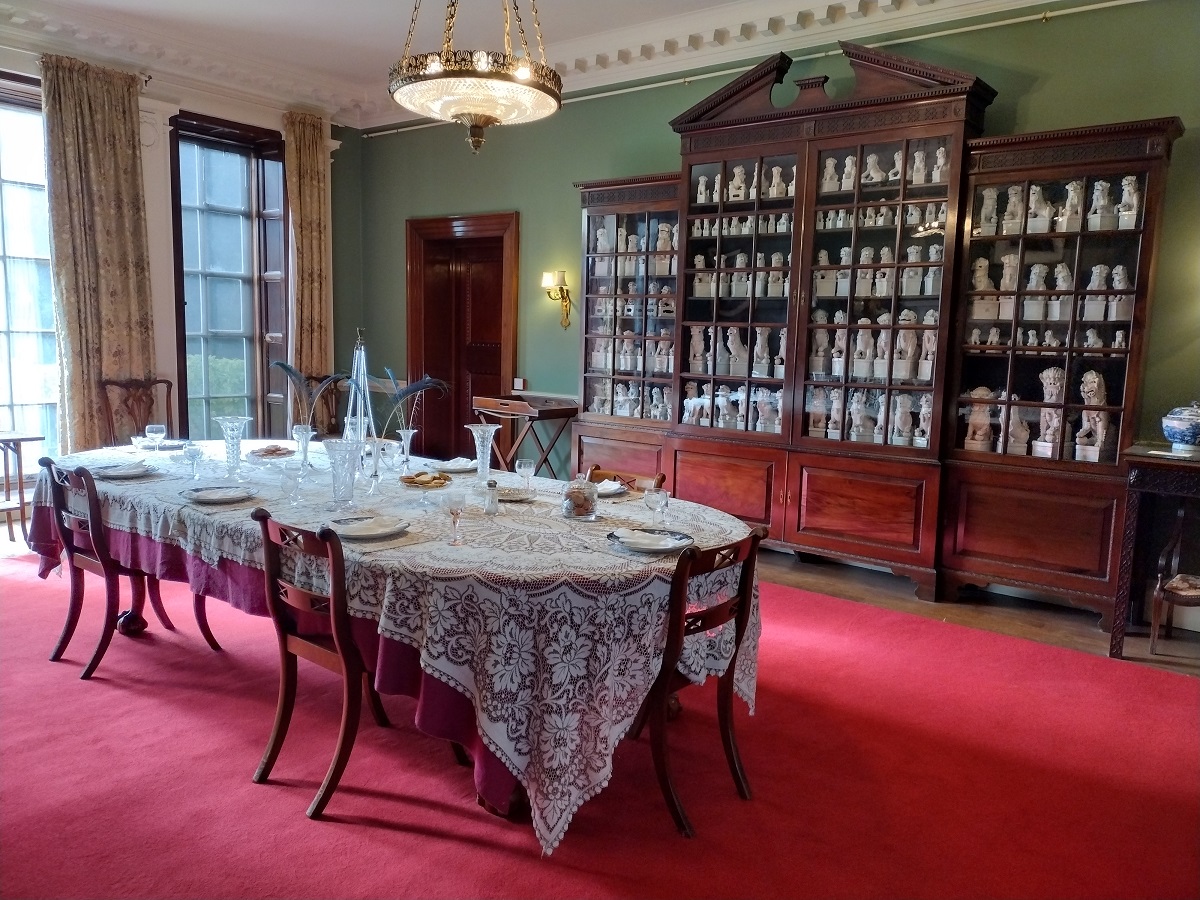Author: Sarah Johnson
Next stop directions: Once you have listened to the audio, go to the Drawing Room next door.
Transcript
Imagine if you will, that you have arrived by coach for dinner at 7.45pm as requested. tThe lights from the candles and gas lamps twinkling through the windows. Your coat has been taken by the butler and you are taken through to the Drawing Room to be greeted your Hostess. After a few minutes of pre-dinner drinks and mingling with , you are summoned through to the Dining Room with the remainder of the guests.
Once you arrive into the room, you are directed to your seat by Lord Thomas Stanford (having been extensively briefed earlier by his Lady wife as to exactly who would sit where) and the meal will begin. Service is usually a la Russe, which is to say, individual courses, brought out one by one by the servants. Conversation is skilfully managed by both lord and lady of the house, from either side of the centre of the table, perhaps with an anecdote of their travels in Egypt, or the goings on in the Salons and Houses of London. As the final plates are cleared away, lady Stanford discreetly alerts the ladies that it is time to withdraw to the Drawing Room for coffee, to leave the men to their discussions of matters of great interest and import.
Today, as you move from the Entrance Hall, one of the oldest parts of Preston Manor, you step into what is arguably one of the newest. The Dining Room was part of the final phase of construction of the manor and was built and furnished in 1905 by Charles Stanley Peach, a close friend of the family. If you look around the room, you can see in the decoration choices, the transition toward the Edwardian preference for simplicity and what they considered a more refined elegance. The simple white accents of the coving on the ceiling and mouldings on the walls, are set in contrast to the plain teal of the painted walls. This is in stark difference to the intensity and busyness you will find in the décor of the Drawing Room.
The table setting you see in front of you is not as it would have been laid out for her ladyship’s last gatherings. Rather it is there to facilitate the hands on experience of our younger visitors who attend the manor with their school year groups. Over the many years since the manor opened to the public as a museum, hundreds of school groups have come face to face with the various jobs that kept a manor house running, and even now those students fondly recall their own visits to Preston Manor.
There is one detail in this room that resisted all attempts at modernisation or restraint and that was Lady Stanford’s collection of exotic ornamental Chinese Lion statues or, as they were known colloquially, Dogs of Fo. These figurines, likely created for the Western market, imitate in miniature the large carved stone Lion statues that would stand guard outside of Buddhist temples. It is believed that Lady Stanford first started collecting these figures, having been shown one by a antiques dealer and been reminded of her favourite dog, her Pekingese, Kylin (which was another name these statues were known by).
Her whole collection of 124 statues is contained in the cabinets that dominate the western wall of the Dining Room. Traditionally these statues come in pairs: one male indicated by a paw resting on an ornamental ball and one female, with a paw resting on the back of a cub. Curiously there is only one female figure in the whole collection and this is a statue believed to have been given to her by her estranged son, John.

